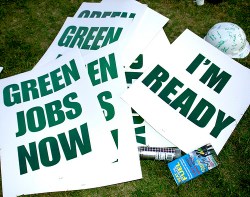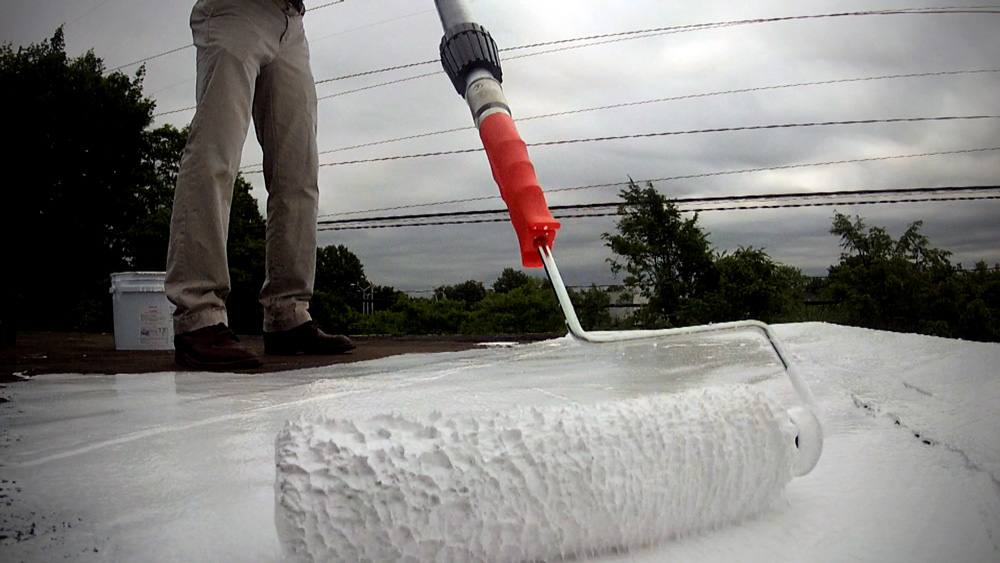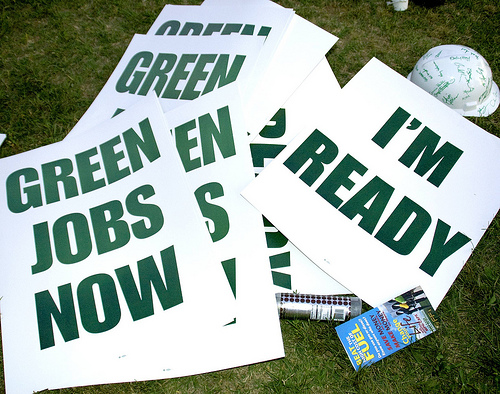 Oil industry apologists are giddy over a video of Rep. Darrell Issa (R-Calif.) questioning a Department of Labor statistician about the various jobs that fall under the header of “green jobs.” The crazy government includes crazy things under that heading! If you work for a facility that sells used clothing, that is a green job! If you drive a hybrid bus, green job! Garbage man! Green job!
Oil industry apologists are giddy over a video of Rep. Darrell Issa (R-Calif.) questioning a Department of Labor statistician about the various jobs that fall under the header of “green jobs.” The crazy government includes crazy things under that heading! If you work for a facility that sells used clothing, that is a green job! If you drive a hybrid bus, green job! Garbage man! Green job!
The idea of categorizing green jobs is a new one, historically speaking. There were obviously green jobs a century ago, but people didn’t look at them as being jobs that focused on sustainability or renewable energy production. The person who collected scrap metal and the person that built windmills just had regular old jobs. Green jobs only became a category tracked by the Bureau of Labor Statistics (BLS) in the past few years, meaning that it was applied retroactively to a number of jobs that clearly fit the definition. I mean, if the person that drives a low-emission mass transit vehicle doesn’t have a green job, then who does?
But that’s the point. Issa and his allies aren’t in the business of accurately defining what a green job is, they’re in the business of making the number of green jobs as small as possible. For Issa, this is a political point: The president spent a lot of time talking about green jobs, and it will be one yardstick against which he is measured in November. For Issa’s allies — the good people of the oil and gas industries — minimizing the number of green jobs is a way of bolstering their dominance in the marketplace. If Chevron and BP had their way, a person who built, installed, maintained, and spun a wind turbine wouldn’t count.
Not that they’re necessarily experts at counting jobs. The oil and gas industry is represented on Capitol Hill by the the American Petroleum Institute (API), an organization that spent $8.6 million lobbying in 2011. The API also counts the jobs it creates, posting the information at a happy little website that sports a sprouting plant as its icon, EnergyTomorrow.org. According to Energy Tomorrow, the oil and natural gas industry supports 9.2 million men and women across the United States. 9.2 million! Some 3 percent of the population!
Which is obviously high. Notice the language, though: “supports.” Which implies that this includes both direct employees and indirect employment — for example, nearby businesses that depend on oil field workers, suppliers, etc. In other words, the sorts of ancillary and extended definitions that the BLS uses in assessing green jobs.
There’s one difference: The jobs cited by the government are cataloged and defined. This lets opponents cherry-pick examples to mock (see yesterday’s article about BP), but also adds accountability. The API’s numbers aren’t public. I looked. That’s not an accident. We have only the oil and gas industry’s word on their job creation; we have only their contested word on jobs they’re likely to create. The government’s numbers are detailed — and have been largely backed up by analysis from the Brookings Institution. (For more on how these calculations were made and validated, see this report from Headwaters Economics.)
So yes, it’s funny to consider a kid that works at a record store as having a green job. But disparaging an industry that employs millions of people by identifying one contentious example is better than shunting millions of dollars in tax subsidies to an industry which is accountable only to itself.



